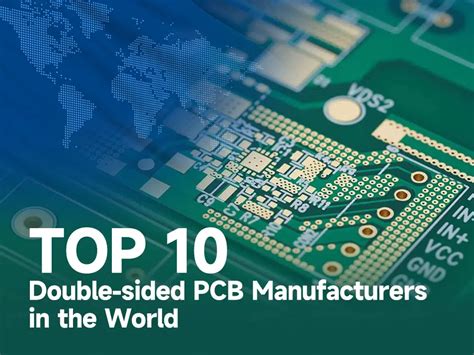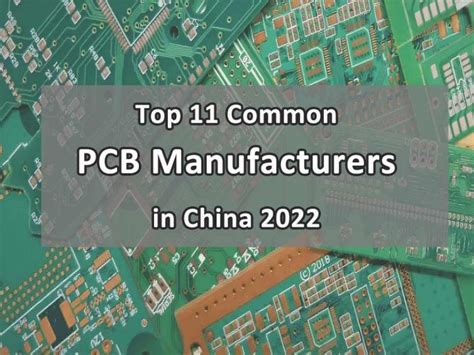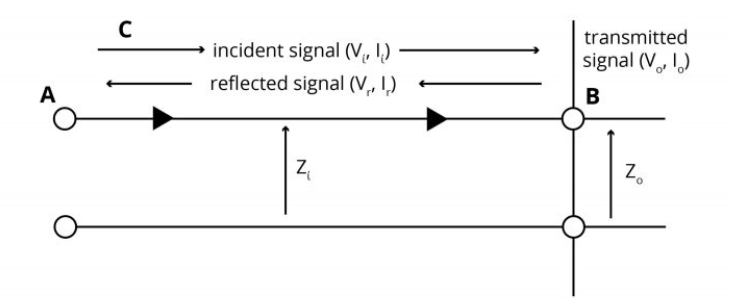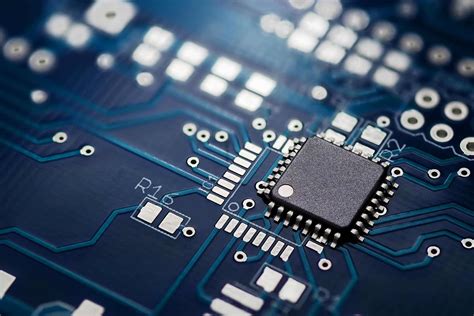The World’s Largest PCB Manufacturers: Leading the Industry Today

Key Takeaways
In assessing the landscape of PCB manufacturing, you will find that the largest PCB manufacturers in the world continue to set industry standards through innovation and efficiency. By focusing on pcb manufacturing costs, these companies strive to balance quality and affordability, ensuring that their products meet various market needs without compromising on excellence.
For instance, notable pcb manufacturing companies have invested heavily in advanced technologies, leading to enhanced precision and minimized waste. Their ability to adapt to emerging trends not only improves production steps but also significantly reduces cycle times, thus making their pcb manufacturing business not only competitive but also sustainable.
| Manufacturer Name | Annual Revenue | Key Innovations |
|---|---|---|
| Company A | $5 Billion | Flexible PCBs |
| Company B | $4 Billion | High-density Interconnects |
| Company C | $3 Billion | Eco-friendly Processes |
“In today’s fast-paced electronics market, staying ahead in PCB manufacturing requires both innovation and strategic pricing.”
Strategically, your understanding of these companies’ strategies can guide you toward better decisions for your projects or business needs. Embracing trends such as automation and AI-driven processes will not only enhance your knowledge but also empower you to navigate the complexities of the PCB industry with confidence. Familiarize yourself with top players’ innovations and best practices, as they will provide a solid basis for your own procurement and partnership strategies within this evolving sector.

Innovations in PCB Manufacturing: A Closer Look at the Giants
In the realm of PCB manufacturing, innovation is key to staying competitive. The giants of the industry leverage cutting-edge technology and research to refine their processes and enhance their products. For instance, advanced techniques such as automated assembly, high-density interconnect (HDI) technology, and environmentally friendly materials are becoming staples among leading PCB manufacturing companies. This shift towards sustainability not only lowers the manufacturing cost but also aligns with global trends in environmental responsibility. Furthermore, these companies are investing heavily in smart manufacturing, employing IoT (Internet of Things) solutions to streamline operations and improve quality control. By embracing methodologies like lean production, they reduce waste and maximize efficiency across the PCB manufacturing business spectrum. The result is a more agile operation that can quickly respond to market demands while maintaining high standards of precision and reliability in their electronic components. This combination of technological prowess and strategic foresight ensures that these manufacturers remain at the forefront of an ever-evolving industry landscape.

Top Products from the Largest PCB Manufacturers in the World
When you explore the offerings from the largest PCB manufacturers in the world, you’ll quickly notice a diverse range of cutting-edge products. These companies specialize in various sectors, producing everything from standard printed circuit boards to high-frequency, multi-layered circuits designed for complex electronics. Their expertise in PCB manufacturing allows them to cater to niche markets, including automotive, telecommunications, and medical devices.
Many of these PCB manufacturing companies excel in developing flexible PCBs that are essential for modern devices requiring lightweight and compact designs. The integration of advanced materials—such as flexible polymer substrates and high-density interconnect technologies—highlights their commitment to innovation. You might also find that their offerings include rigid-flex constructions that combine rigid sections with flexible circuits, enabling better performance for intricate assemblies.
In addition to traditional boards, you can expect these manufacturers to provide high-quality solutions geared towards reducing PCB manufacturing costs while maintaining excellent standards. Their focus on automation and efficiency is transforming the PCB manufacturing business, ensuring they remain competitive on a global scale. By leveraging state-of-the-art production techniques like laser drilling and advanced solder mask applications, they deliver products that not only meet but often exceed industry standards.
In summary, by investigating the top products offered by these giants in the PCB manufacturing field, you gain insight into their vast capabilities and technological advancements paving the way for future innovations in electronics.
Competitive Edge: What Sets These PCB Leaders Apart?
The pcb manufacturing landscape is fiercely competitive; leaders in this industry distinguish themselves through various strategic advantages. First and foremost, their investment in cutting-edge technology plays a pivotal role. Unlike smaller pcb manufacturing companies, these giants frequently adopt advanced automation and digitalization, significantly enhancing production efficiency and reducing pcb manufacturing costs. This allows them to scale operations effortlessly while maintaining high-quality standards. Additionally, their robust research and development (R&D) efforts yield innovative products that meet the ever-evolving demands of a diverse market.
Furthermore, strong partnerships with major clients and suppliers create a solid network that benefits their pcb manufacturing business model, providing them an agility that smaller firms often lack. The ability to swiftly adapt to changes in technology trends is crucial as well; leading manufacturers prioritize sustainability and eco-friendly practices, helping them appeal to a growing consumer base that values environmental responsibility. Finally, their expansive global reach enables these companies to tap into emerging markets while driving localization strategies where necessary. In essence, the competitive edge of the world’s largest PCB manufacturers lies in their ability to innovate continuously, forge strong relationships, and maintain an adaptable business model in a rapidly changing industry landscape.

Emerging Trends in Electronics and Their Impact on PCB Makers
The landscape of pcb manufacturing is increasingly influenced by several emerging trends within the electronics sector. As consumer demand shifts toward smaller, faster, and more efficient devices, pcb manufacturing companies are compelled to innovate their production processes and materials. For instance, advancements in materials science have allowed for the development of high-frequency PCBs, which are essential for today’s telecommunications and data processing equipment. Moreover, sustainability has become a focal point; many pcb manufacturing companies are now prioritizing eco-friendly production methods to reduce pcb manufacturing costs while adhering to environmental regulations.
Additionally, the rise of Internet of Things (IoT) applications creates a surge in demand for complex PCBs, necessitating a shift in the capabilities of these manufacturers. As you explore the advancements made by industry leaders, it becomes evident that adapting to these trends is crucial for maintaining a competitive edge in the pcb manufacturing business. Collaboration with tech companies also plays a vital role, allowing manufacturers to tailor their products more closely to consumer needs. Overall, these trends not only sculpt the future of electronics but also significantly shape how pcb manufacturers operate and compete on a global scale.

Globally Recognized Manufacturing Practices in the PCB Industry
In the dynamic landscape of PCB manufacturing, certain practices have emerged as benchmarks for quality, efficiency, and innovation. Leading PCB manufacturing companies employ advanced techniques that include automation, lean manufacturing principles, and stringent quality control measures. These companies invest significantly in state-of-the-art technology to minimize PCB manufacturing costs while maximizing output. For instance, adopting Industry 4.0 principles—such as smart factories that utilize IoT and AI—has allowed them to enhance production processes and improve product customization capabilities. Furthermore, commitment to sustainability has become a critical aspect; many of these giants have implemented environmentally friendly practices in their PCB manufacturing business operations, ensuring reduced waste and energy consumption. These adherence to globally recognized standards not only elevates their competitive edge but also instills confidence among clients globally who seek reliable partners in the complex world of electronics. The blending of tradition with modernity defines their journey towards excellence in the PCB manufacturing sector, showcasing a relentless pursuit of innovation that sets them apart in an ever-evolving market.

Future Outlook: The Evolution of PCB Manufacturing Leaders
As the landscape of pcb manufacturing continues to evolve, staying updated on the latest trends and technological advancements becomes paramount for both consumers and businesses. The pcb manufacturing companies dominating the market are poised to innovate continuously, embracing new materials and methods that enhance both efficiency and functionality. This evolution is a response to the growing complexity of electronic devices, where performance is paramount, driving down pcb manufacturing costs while simultaneously boosting quality.
Emerging technologies such as Artificial Intelligence and Internet of Things (IoT) are set to redefine the pcb manufacturing business, leading to smarter, more adaptive production processes. As these leaders invest in research and development, you might find that their ability to deliver high-quality products at competitive prices will distinguish them even further from their competitors. This competitive edge does not merely stem from cutting-edge technology; it also incorporates sustainability practices that appeal to a more environmentally conscious market. Overall, the future of pcb manufacturing lies in the hands of these giants who are ready to set new standards for excellence and innovation in an ever-changing industry landscape.
Conclusion
In summary, the largest PCB manufacturers have played a pivotal role in shaping the landscape of PCB manufacturing today. Their ability to innovate and adapt to emerging trends has distinguished these PCB manufacturing companies from their competitors. With cutting-edge technologies, these leaders ensure that they not only meet but anticipate the evolving demands of the electronics industry. Understanding the intricate pcb manufacturing cost structure is essential for anyone looking to engage in this field, as it influences pricing strategies and market positioning. The competitive edge these companies maintain is fundamental to sustaining their dominance in a rapidly changing environment. Their comprehensive approaches address sustainability and efficiency while constantly exploring new avenues within the pcb manufacturing business realm. As you look forward to engaging with or investing in this industry, recognizing the significance of these giants will provide you with insights essential for navigating future developments in PCB technology and applications.
“FAQs”
What are the largest PCB manufacturing companies in the world?
The largest PCB manufacturing companies include industry giants that have revolutionized electronic components. They excel in producing high-quality printed circuit boards at scale.
What innovations are shaping PCB manufacturing today?
Innovations like advanced automation, eco-friendly materials, and cutting-edge design software are leading to enhanced efficiency and reduced PCB manufacturing costs.
How do PCB manufacturers maintain a competitive edge?
To stand out, these PCB manufacturing companies focus on R&D, adopt lean production techniques, and offer rapid prototyping services to meet diverse customer needs.
What factors influence PCB manufacturing costs?
Several factors influence PCB manufacturing costs, including material quality, production volume, complexity of designs, and the technology used in the fabrication process.
What trends should be noted in the PCB manufacturing business?
Emerging trends such as IoT integration, flexible circuit designs, and increased demand for miniaturization are significantly impacting the PCB manufacturing business, leading to innovative solutions in product development.







